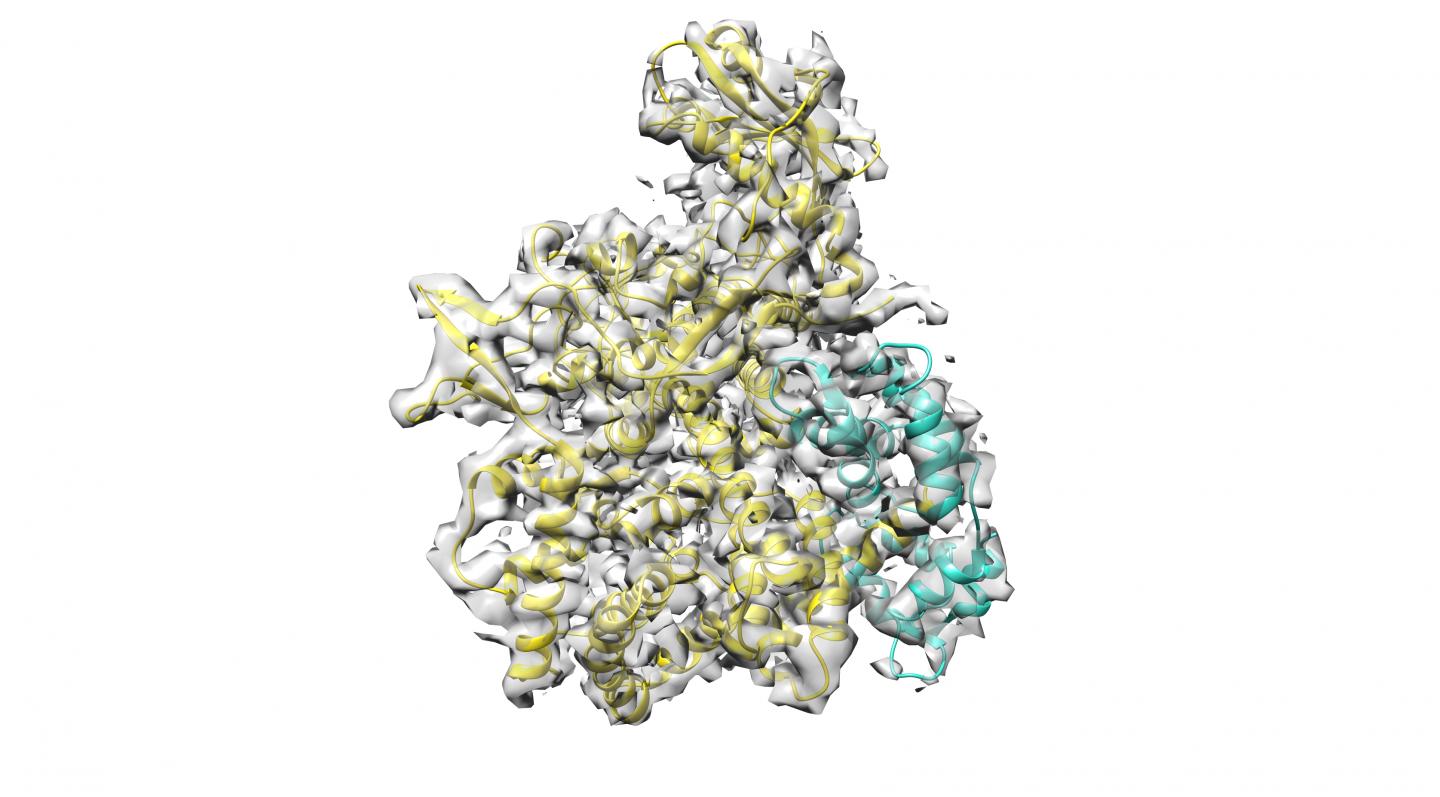Frankfurt researchers have explained the mechanism of regulator SidJ in detail — accelerated publication in Nature

Credit: EMBL Grenoble
In order to control cellular processes and thwart the immune system, the bacterium Legionella pneumophilia, the cause of the notorious Legionnaires’ disease, releases hundreds of enzymes. Biochemists at Goethe University have now elucidated important details in the interaction of bacterial effectors. They discovered how the regulatory enzyme SidJ keeps other dangerous virulence factors in check.
The incidence of Legionnaires’ disease has increased in the past two decades. The natural habitat of Legionella is freshwater biotopes, where they mainly reproduce in amoebae. In addition, Legionella can also colonize water tanks or pipes and spread, for example, via poorly maintained air-conditioning systems. Contaminated aerosols are released into the air and trigger the infection. The pathogens cause, among others, pneumonia, which is often fatal in elderly patients or individuals with a weak immune system.
What makes Legionella so dangerous is its ability to multiply in phagocytes of the immune system by secreting virulence factors. Some of these effectors – the enzymes of what is known as the SidE family – are so toxic that without tight control they would instantly kill their host cells. However, since Legionella needs the host cells in order to multiply, it has developed a sophisticated mechanism for the precise metering of SidE enzyme activity. Details of this process are now reported by scientists at Goethe University and from Grenoble in the journal Nature.
They have shown that the regulator SidJ also released by Legionella works as an antidote to SidE enzymes, thus ensuring accurate control of SidE activity. The SidJ regulator is a glutamylase, i.e. it has a rare enzyme activity that allows amino acid glutamates to be linked together to form chains. In this case, SidJ attacks the central glutamate of SidE enzymes and inhibits their activity. So far, little is known about glutamylases – so the scientists were all the more surprised when they discovered that it is precisely this type of enzyme which is important for the coordinated interaction of the virulence factors of Legionella.
“This is a typical example of how completely unpredictable results drive research. Such discoveries are what make science such a fascinating and exciting profession,” says Professor Ivan Dikic from the Institute of Biochemistry II and the Buchmann Institute for Molecular Life Sciences at Goethe University. “We can only gain a molecular understanding of the complex world of bacterial infections by working in interdisciplinary teams and combining methods from modern biochemistry and proteomics with cell and structural biology techniques.”
The researchers also revealed how SidJ is activated in host cells: It requires the calcium-binding protein calmodulin found in mammalian cells. Cryo-electron microscopy played an important role in explaining the structure of the calmodulin-SidJ complex. “Glutamylation as a protein modification is understudied. Our finding that Legionella pneumophilia uses exactly this mechanism to sustain the infection certainly argues for more research in this field. For example, the extent to which Legionella utilizes this modification to regulate other cellular processes is completely unclear,” explains Dr. Sagar Bhogaraju, who led the microscopic examinations at the European Molecular Biology Laboratory (EMBL) in Grenoble.
This so far unknown mechanism opens up new possibilities for research to inhibit the spread of Legionella in the host organism. “We’re currently working on eliminating SidJ selectively by developing inhibitors for the glutamylase domain. In addition to the use of antibiotics, they could prevent the spread of Legionella pneumophilia in phagocytes,” explains Dikic.
###
Media Contact
Ivan Dikic
[email protected]
Related Journal Article
http://dx.




